The Z9 is the first flagship mirrorless model from Nikon, in addition to being its most advanced interchangeable-lens camera to date. Following the good but not super impressive Z5, Z6 and Z7 series, the Z9 seems to be the product that will place Nikon back on top, although it does share the spotlight with another brand.
The Sony A1 is at the same level as the Z9, and a tough competitor at that. It offers many of the same specifications and performance in a smaller body.
Let’s see how these two workhorses compare.
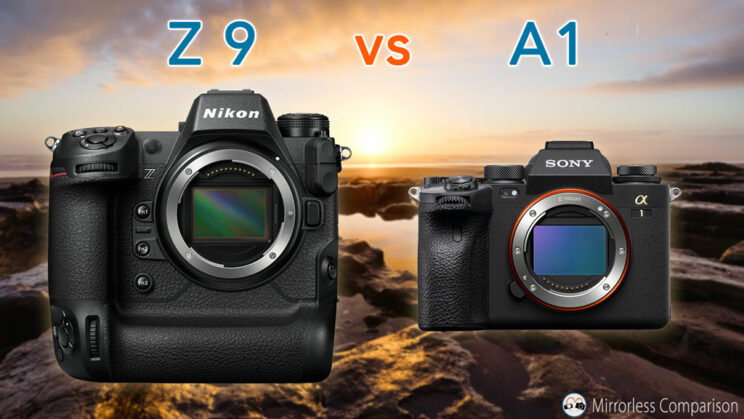
More comparison previews:
Canon R3 vs Sony A1
Nikon Z9 vs Sony A1
Nikon Z9 vs Canon R3
Ethics statement: the following is based on official information. We were not asked to write anything about these products, nor were we provided with any sort of compensation. Within the article, there are affiliate links. If you buy something after clicking the link, we will receive a small commission. To know more about our ethics, you can visit our full disclosure page. Thank you!
1. Image sensor
The Z9 and A1 pack a full frame sensor with a stacked design, which means they can deliver faster readout speed in comparison to normal CMOS sensors. A stacked design gives engineers more flexibility, and in the case of Sony, they also added an integral memory to increase the speed further.
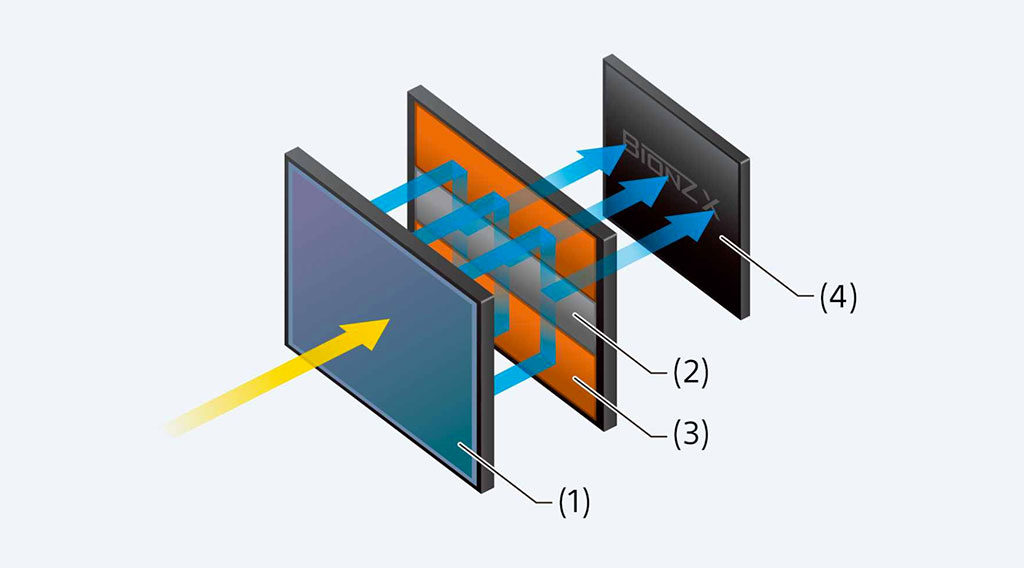
Thanks to this technology, both cameras can achieve impressive continuous shooting speeds, deliver live view with no blackouts, and keep the rolling shutter effect (distortion) to a bare minimum. We’ll take a deeper look at these specifications in the following chapters.
What you can appreciate about these two cameras, in addition to the monstrous speed performance, is that the speed is achieved with a high resolution sensor: the Z9 uses 45.7MP whereas the Sony has slightly more pixels at 50.1MP. Additionally, the Sony sensor is back-illuminated.
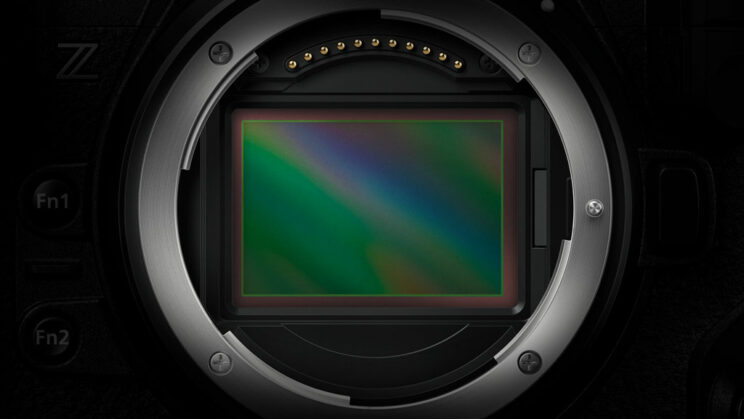
Concerning the ISO range, they are similar: the Z9’s base starts from ISO 64 but the A1 tops out at 32,000 ISO (for the normal range).
| ISO | Z9 | A1 |
|---|---|---|
| Photos (normal) | 64-25,600 | 100-32,000 |
| Photos (extended) | 32-102,400 | 50-102,400 |
| Video (normal) | 64-25,600 | 100-32,000 |
| Video (extended) | 64-102,400 | – |
Then we have the image files. With the Z9, Nikon ditched the option of recording 12-bit, as well as the uncompressed RAW option. Everything works at 14-bit with lossless compressed RAW, or the new High Efficiency RAW with two levels to choose between: one reduces the file size by approximately half, the second makes it 1/3 of the original size.
The A1 can record with uncompressed, lossless compressed or compressed RAW in 14-bit. It can also shoot in HDR / HEIF format, which gives you more colour depth than JPGs (10-bit vs 8-bit).
2. Design
Nikon used a very similar design to its flagship DSLR cameras, with a tall body that integrates the vertical grip into a unique frame. The Z9 is also larger and heavier than the A1, even when the latter has the optional battery grip attached.
- Z9: 149 x 149.5 x 90.5mm, 1340g
- A1: 128.9 x 96.9 x 80.8mm, 737g
- A1 + VG-C4EM: 128.9 x 148.5 x 80.8mm, 1027g
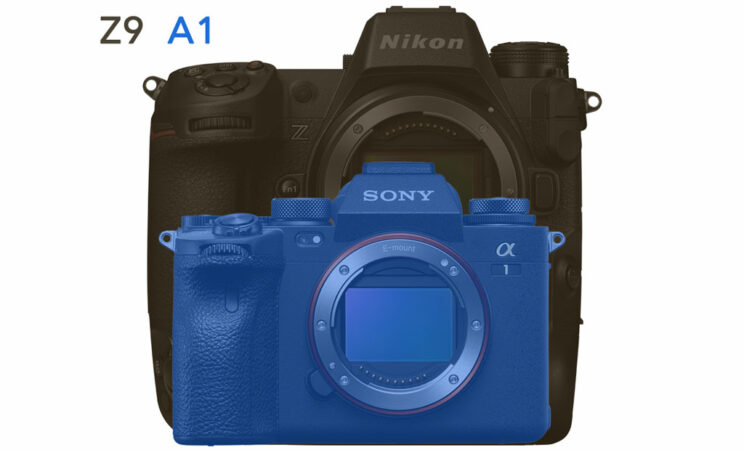
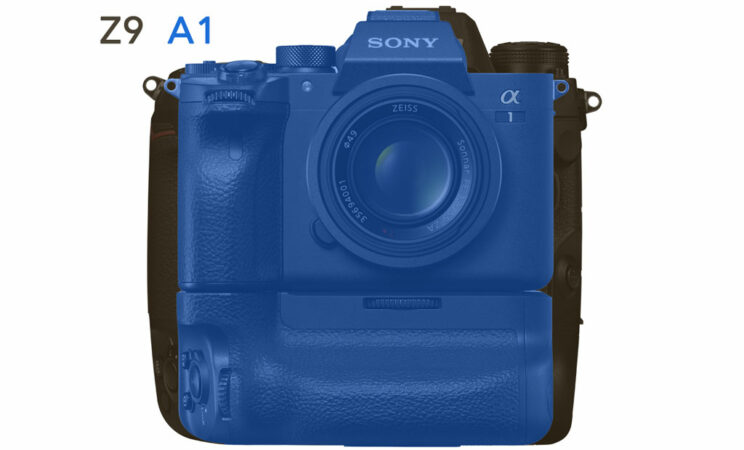
Both cameras are weather-sealed and feature a strong magnesium alloy body.
In terms of buttons, the Z9 has more of them distributed around the body, including the three Function buttons on the front, and additional keys on the rear to record a quick audio memo. Some of these controls, including the AF joystick, are replicated for vertical use.
The A1 offers a good number of controls, including the joystick on the rear, and the exposure compensation dial on top.

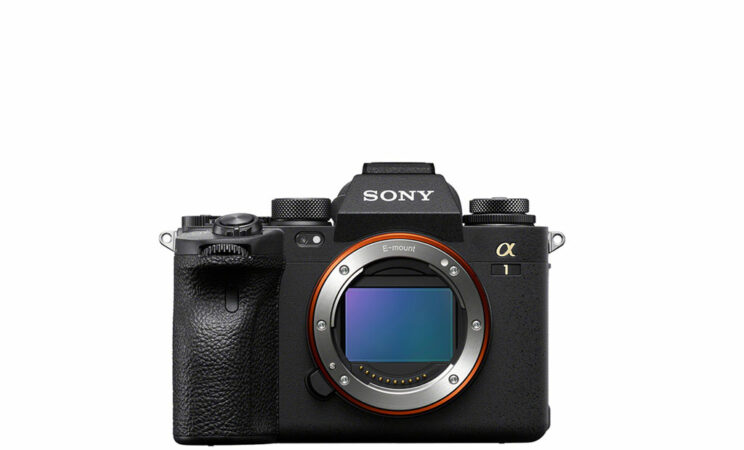
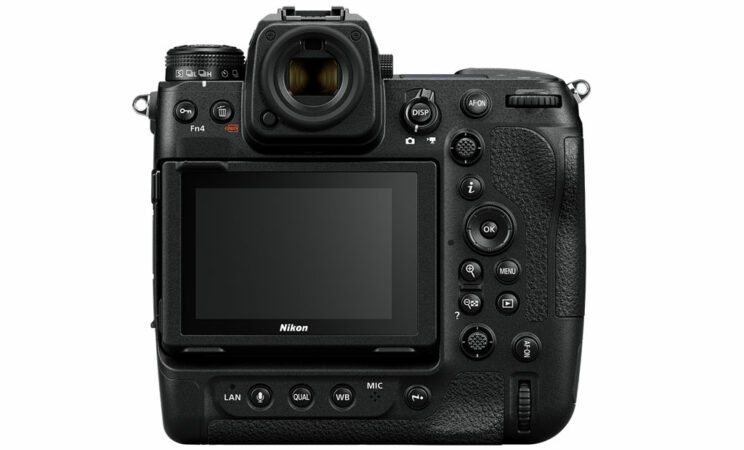
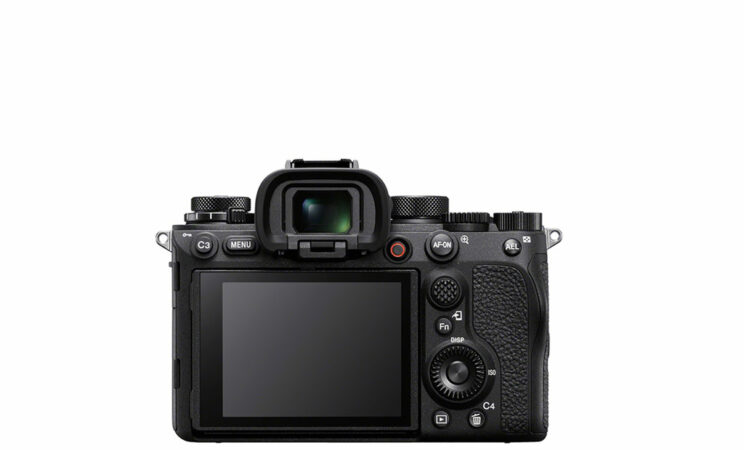
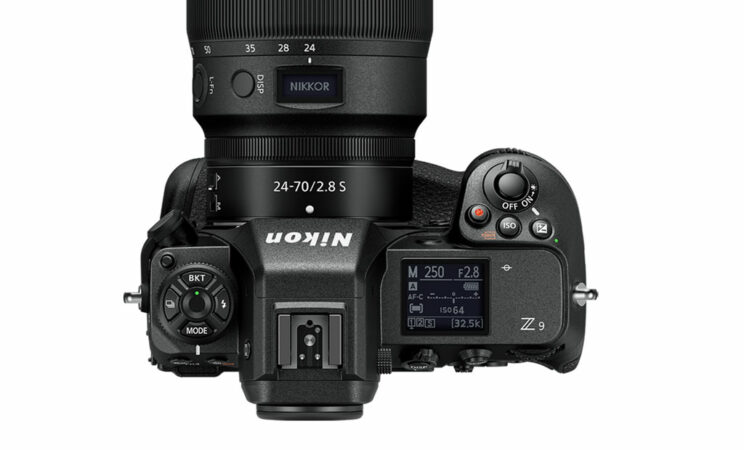
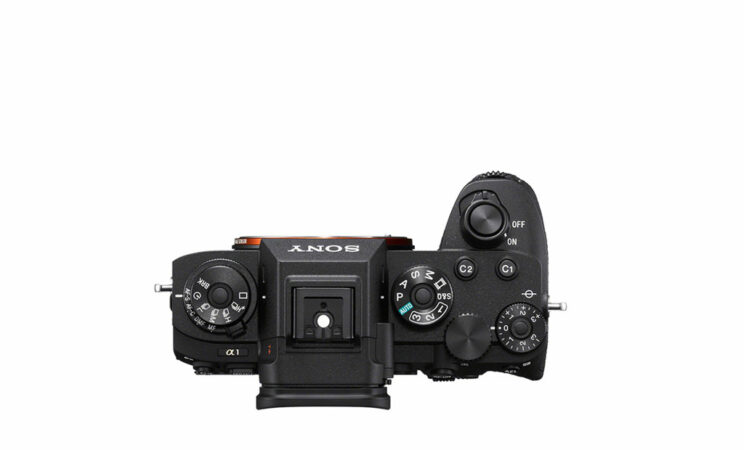
The Z9 is a shutterless camera, meaning that it relies solely on the electronic shutter, and lacks the traditional mechanical curtains that go up and down (more on this further down). That said, it has what Nikon calls a ‘sensor shield’, which is a similar metal curtain whose only purpose is to cover the sensor when the camera is turned off, in order to protect it when you change lenses. This ‘shield’ looks more robust than a normal shutter curtain.
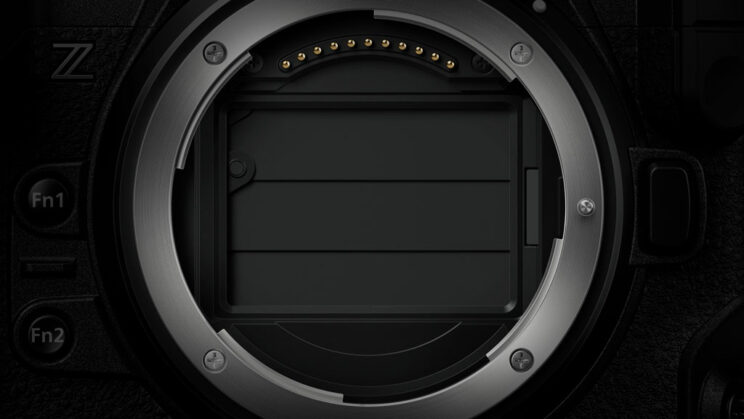
The A1 also has a similar function, called Anti-Dust, but it uses the mechanical shutter to cover the sensor. Although this certainly protects the sensor from dust, you also have to be careful with the curtains themselves as they are more fragile by nature.
The two cameras are rich in connections, offering LAN, the latest generation USB C, microphone in, headphone out, flash sync and a full sized HDMI.
3. Viewfinder and rear screen
The Z9 features an electronic viewfinder with 3.69M dots, a resolution that is a bit disappointing for a flagship mirrorless by today’s standards. However, Nikon said that the resolution never drops when focusing or shooting in burst mode, and the OLED panel is the brightest on the market with 3000-nit. The magnification is 0.8x, the eye-point is 23mm and the refresh rate is 60fps, although Nikon says it doesn’t use interpolation.
Of course we’ll have to see the in real world how good the Z9 EVF is against competitors like the A1, whose viewfinder is, on paper, much more impressive, with almost three times the resolution (9.44M dots), a variable magnification (largest is 0.9x) and a refresh rate that can be four times faster (240Hz). The eye-point is also longer at 25mm.
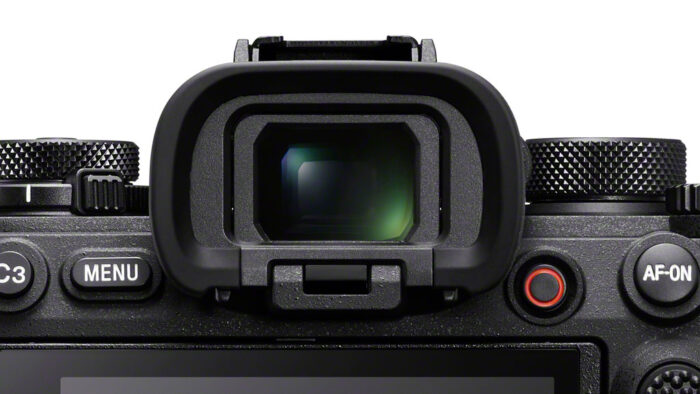
On the rear, the Z9 features a 3.2-in (8cm) LCD panel with 2.1M dots of resolution and touch sensitivity. What’s more, the screen moves on 4 axis and can also be titled when working in vertical mode.
The A1 monitor only tilts up and down, is a bit smaller (3.0-in) and has less resolution (1.44M dots).
Both screens are touch sensitive.
One common feature you’ll find on the two cameras, when it comes to the shooting experience, is that they can maintain live view in the EVF (and LCD) while shooting without any blackouts, even in continuous mode. This is possible thanks to the use of the electronic shutter, the fast readout speed of the stacked sensor and their powerful image processors. In short, both cameras have enough power to record sensor data while simultaneously sending it to the EVF/LCD. Other cameras that are capable of this are the Sony A9, A9 II, Canon R3, Fujifilm X-T3 and X-T4.


Other mirrorless models either show blackouts between the frames, or show you the images that are being recorded instead of live view. You can read more about this in our in-depth article about the evolution of the electronic shutter.
4. Shutter and speed
Perhaps it is time to do a quick rewind: in 2017, Sony introduced the A9, the first mirrorless camera with a blackout-free live view EVF, very fast sensor readout and impressive drive speed of 20fps (for a full frame camera). All this was possible thanks to the stacked sensor and electronic shutter, which delivered faster performance than the mechanical shutter.
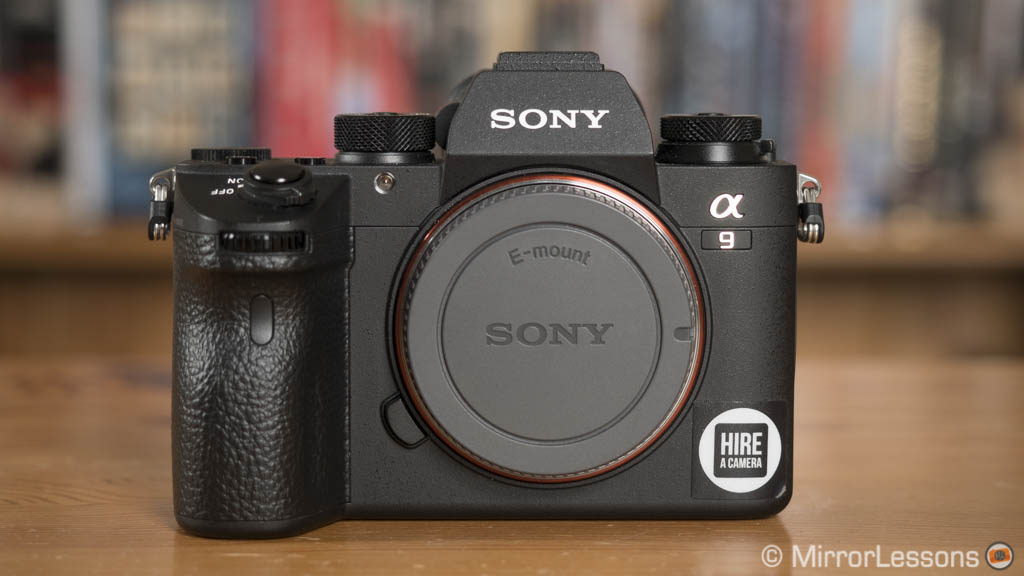
I always thought that the A9 was the first real sign of what future mirrorless cameras would become, cameras on which the mechanical shutter becomes all but obsolete. At the time, there were still a few issues to resolve, like flickering and banding under specific lights such as LED, and the possibility to sync flash at the same speed as a mechanical shutter.
In 2021, the first mirrorless camera to throw the mechanical shutter in the bin is the Nikon Z9. Technically, it’s the third because the Sigma fp and fp L are also ‘shutterless’, but the scan speed is not comparable. So the Z9 is the first camera that truly believes the electronic shutter is the future and can cover all the basics of a mechanical shutter, and more.
The Sony A1 has an electronic shutter mode that is as powerful as the Nikon, so let’s see exactly what these two cameras are capable of when it comes to speed.
| E-shutter | Z9 | A1 |
|---|---|---|
| Max. shutter speed | 1/32,000s | 1/32,000s |
| Max. flash sync | 1/250s | 1/200s |
| Max. drive speed | 20fps 30fps (JPG) 120fps (11MP) | 20fps 30fps (‘lossy’ RAW/JPG) |
Sony has kept the mechanical shutter on the A1, and pushed the flash sync to 1/400s in full frame mode and 1/500s in APS-C mode (world’s fastest at the moment).
Both Nikon and Sony promise no distortion when using the electronic shutter (rolling shutter effect), something that Sony calls Anti-Distortion shutter.
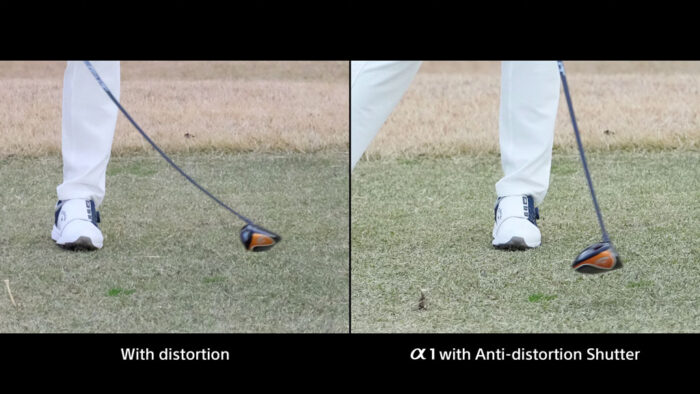
Nikon’s decision to get rid of the mechanical option is certainly a bold move, and also a show of confidence in their sensor readout speed. I’m sure they did all the tests required to assess the performance in various situations.
On the A1, Sony also added a function called Hi Frequency Flicker. It allows you to fine tune the shutter speed to match the exact flicker frequency of artificial light (from 1/50s to 1/8064.5s). This is particularly useful when working under LED lights or when there is LED signage on the background of a football game for example. This was implemented after listening to the feedback of sports photographers who encounter such problems with the A9.
Finally, we have the buffer memory. The Z9 seems to have the upper hand here with more than 1,000 images (JPG or High Efficiency RAW) at 20fps (they didn’t reveal the same data for 30fps).
The A1 can shoot 165 JPGs or 155 compressed RAW at 30fps (no data available for slower speeds).
5. Autofocus and subject recognition
The Z9 and A1 are the most advanced cameras for each company when it comes to autofocus, not just in terms of overall speed, but also machine learning technology that allows them to recognise different types of subjects and focus on the best part of their body (eyes for example).
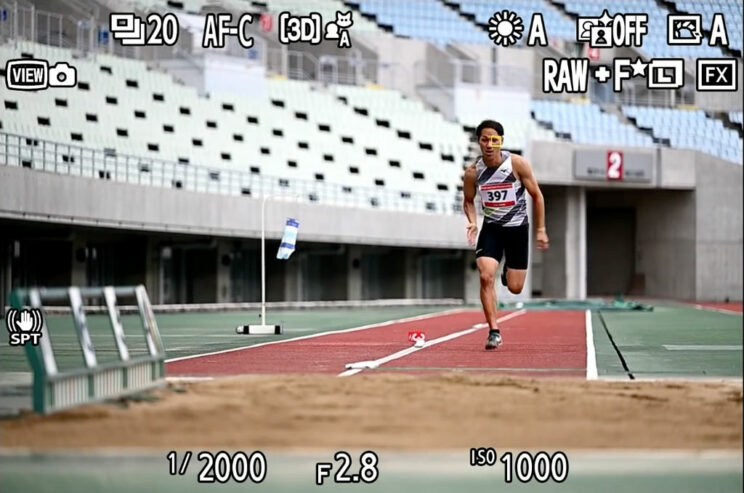
The Z9 features 493 hybrid points (contrast / phase detection) and a processing speed that equals 120 calculations per second.
The A1 uses 759 phase detection points, 425 contrast detection points and shares the same calculation speed as the Nikon.
For the first time on a mirrorless camera, Nikon has included its renowned 3D Tracking mode, which DSLR users know very well for being so effective (I too remember how well it worked on the D500 to track birds in flight). This is certainly an important step forward from the AF tracking mode of the Z6 and Z7 series.
The A1 features Sony’s real-time tracking, which can analyse different aspects of the subject (eyes, face, pattern, colour and focus distance). At the time of writing, it is the best tracking mode I’ve tested on a mirrorless camera and I’ll be curious to see how the Nikon 3D Tracking compares.

They two cameras can recognise a variety of subjects (humans and animals), and the Z9 can also detect various types of vehicles.
| Subject det. | Z9 | A1 |
|---|---|---|
| Humans | Eyes, faces, torsos | Eyes, faces |
| Animals | Dogs, cats, birds | Various (including birds) |
| Vehicles | Cars, bikes planes, trains | – |
Finally, when it comes to low light sensitivity, the Z9 has an advantage: it has a minimum sensitivity of -6.5Ev, which can be extended further to -8.5Ev when activating the Startlight View assist. These measurements are done with an F1.2 lens. With an F2 lens, the rating would equal -5Ev and -7Ev respectively.
The A1 has a lower rating, which is -4Ev with an f/2 aperture.
6. Video capabilities
The Z9 and A1 have class-leading video capabilities, with internal 8K recording, as well as 4K 120p and 10-bit 4:2:2. The Nikon will also be able to record Prores RAW and the new N-RAW format at a later date.
| Format | Z9 | A1 |
|---|---|---|
| 8K 60/30p | yes* | 30p only |
| 4K 120/60/30p | yes | yes |
| FHD 240p | no | yes |
| FHD 120/60/30p | yes | yes |
| Compression | ProRes 422 HQ* H.265 H.264 | H.265 H.264 |
| Bit depth (internal) | 10-bit 4:2:2 | 10-bit 4:2:0 |
| RAW | 12-bit* internal | 16-bit HDMI |
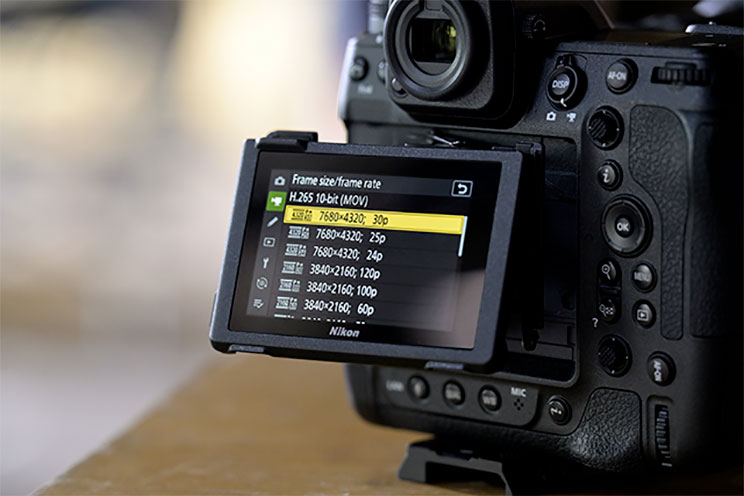
In 8K, both cameras record with full pixel readout and no pixel binning (oversampling), without sensor crop. The Z9 can do the same in 4K as well, up to 30p.
In 4K 60p and 120p, the A1 uses pixel binning, and there is also a small 1.13x crop at 120p. Nikon hasn’t specified the method it uses for 4K 60/120p.
You will find advanced settings such as Log and HDR on both cameras. The A1 offers S-Log2, S-Log3 and HLG, whereas the Nikon includes N-Log and HLG. All these settings are available for internal recording.
Finally, neither has a recording limit of 30 minutes per clip.
7. Image stabilisation
The Z9 and A1 come with 5-axis image stabilisation.
The Z9 has a slightly higher compensation rating of 6 stops when used with a Z VR lens.
The A1 has a rating of 5.5 stops for the sensor stabilisation alone.
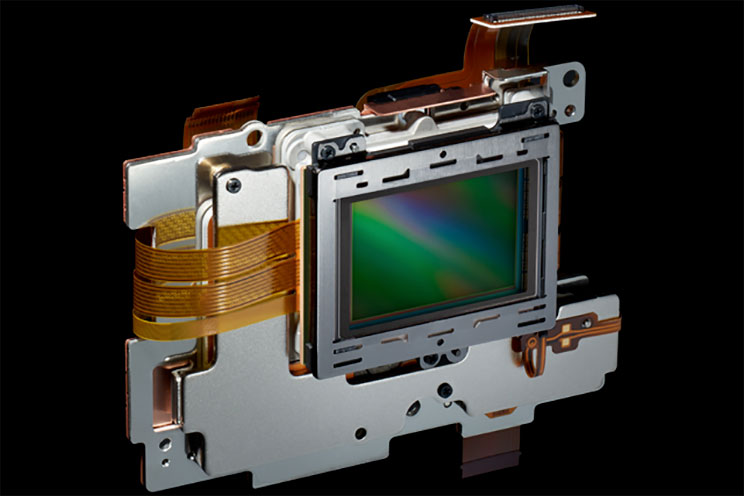
Both cameras can combine the 5 axis of in-body stabilisation with the two axes on the lens optical stabilisation. For Nikon, this is a first, as previous cameras (Z6, Z7) only use three axes when a VR lens is mounted.
Stabilisation works for video too, and the Z9 also offers Electronic VR, which crops the sensor slightly but improves the footage stability.
Sony has a similar feature called Active mode, which uses the gyro sensor data of the camera to improve the performance.
The A1 also has another option when paired with the Sony Catalyst software. In short, you keep the IBIS off but the gyro sensor data is saved in the video files. Catalyst is then capable of analysing that data and stabilising the software on your computer with greater results.
Finally, the Sony camera takes advantage of the stabilisation mechanism on the sensor for an additional feature called Pixel Shift Multi Shooting. When activated, the camera takes 16 images and moves the sensor slightly between each shot (1 pixel and half a pixel, 8 times each). Once you composite the 16 photos in post (Sony Imaging Edge needed), you get a crazy 199MP file. Note that camera needs to be on a tripod for optimal results, and it’s better not to have moving subjects in the frame.
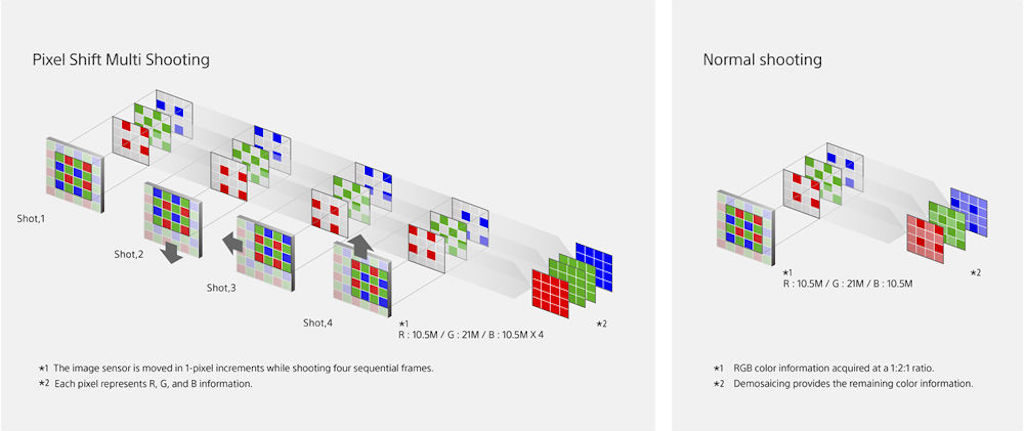
8. Memory cards and battery life
Both cameras features two slots but they use different types of cards.
On the Z9, you can only use two CFexpress Type B cards.
On the A1, you can work with either two UHS-II SD cards, or two CFexpress type A cards. Note that the Type A CFexpress cards are smaller than the Type B.
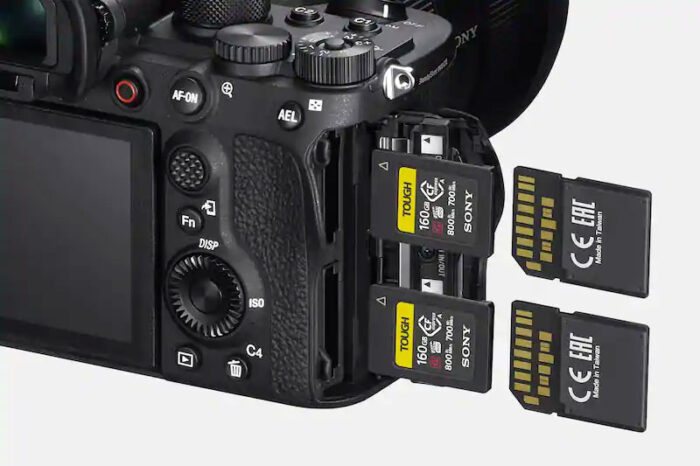
As for the battery life, the Z9 has a rating of 740 shots (LCD) or 700 shots (EVF).
The rating for the A1 rating is lower, with 530 frames (LCD) or 430 frames (EVF).
As always, remember that these ratings are always lower than real world use.
9. Lenses
At the time of publishing this article, Nikon has 20 full frame lenses, including the latest 100-400mm F4.5-5.6 and 24-120mm F4, and two teleconverters. There is a decent selection from very wide to telephoto, as well as F2.8 trinity zoom and fast primes, but we’re still far from having a complete system, not just from Nikon itself but also third party manufacturers. Of course these things take time, and we must not forget than the Z-mount system started only three yeas ago.
With Sony, it’s a different story. The E-mount system started in 2013, and the company has had more time to develop around 40 native full frame lenses and two teleconverters. There is more choice than for Nikon, especially when it comes to super telephoto and affordable lenses. What’s more, the success of the system and the specs-disclosed E-mount has encouraged other brands to produce lenses for Sony, and today there is a large offering from Zeiss, Sigma, Tamron, Samyang and others.
There is also the option to adapt DSLR lenses. This is especially convenient for Nikon users because the performance remains really good, and the brand has also introduced a second generation adapter along with the Z9.
Although I haven’t tested the A1, or the latest adapters on the market, my experience adapting Nikkor lenses on Sony cameras has not been great when it comes to autofocus and overall stability. I had a better experience with Canon EF lenses.
10. Price
The Z9 is less expensive than the A1, and can be found for $5500, £5300 or €6000.
The A1 is available for $6500, £6500 or €7300.
Prices as of October 2021 and for the body only.
Conclusion
Sony was the first brand to believe in a high-end mirrorless full frame system, and lost no time releasing one innovation after another. First it was the possibility to use DSLR lenses with good AF (A7R II), then it was the ground-breaking performance (A9). The brand also releases the best sensors on the market and listens to photographers’ feedback to fix various flaws.
Nikon took its time, but it is important to remember that they were the first to bring super speed to the mirrorless market, with the unsuccessful 1 system.
Today, the A1 represents the best Sony and the high-end mirrorless market has to offer, but it is no longer alone. The Canon R3, and now the Z9 are becoming some of the most advanced digital cameras we’ve seen.
I’m also pleased to see that Nikon showed ‘balls’ by doing a few things Sony hasn’t done yet, like getting rid of the mechanical shutter, incorporating 8K 60P RAW, and even just adding the flexible Apple Prores codec. All these changes show they’ve been thinking a lot about how to give users the best quality possibility, but also flexibility.
The major difference is the size. Sony likes to keep its cameras as small and as compact as possible, whereas Nikon has a large group of pro users that rely on a body like the Z9. True, all you need to do with the A1 is add the optional battery grip, so in a way you have the choice of having something smaller or more comfortable depending on your needs. Also, the larger Nikon body helps with heat dissipation, among other things.
I can’t talk about image quality or performance without a serious side by side test, so for now, all I can say is that the Z9 looks like an impressive camera, and I’m sure it can give the A1 a run for its money. And video wise, it actually has more to offer, at least on paper.
Reminder: the links below are affiliate links. If you decided to buy something after clicking the link, we will receive a small commission.
Check price of the Nikon Z9 on
B&H Photo
Check price of the Sony A1 on
B&H Photo
More comparison previews:
Canon R3 vs Sony A1
Nikon Z9 vs Sony A1
Nikon Z9 vs Canon R3
